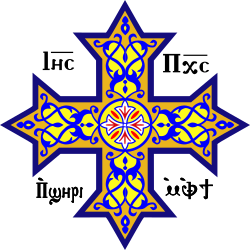| Part of a series on the |
| Copts |
|---|
| Culture |
| Regions |
| Denominations |
| |
The Coptic Orthodox Church in Australia is organised into two Coptic Orthodox dioceses with over 50 parishes, three monasteries, two theological colleges and four schools. The church is a member of the National Council of Churches in Australia. According to the 2006 Census of Australia, there were a total of 19,928 followers of Coptic Orthodoxy nationally.[ citation needed ] Currently, the church has as many as 100,000 members in Australia (in Sydney alone it is estimated that there are 70,000 Copts, with numbers in Melbourne in the tens of thousands). [1]
